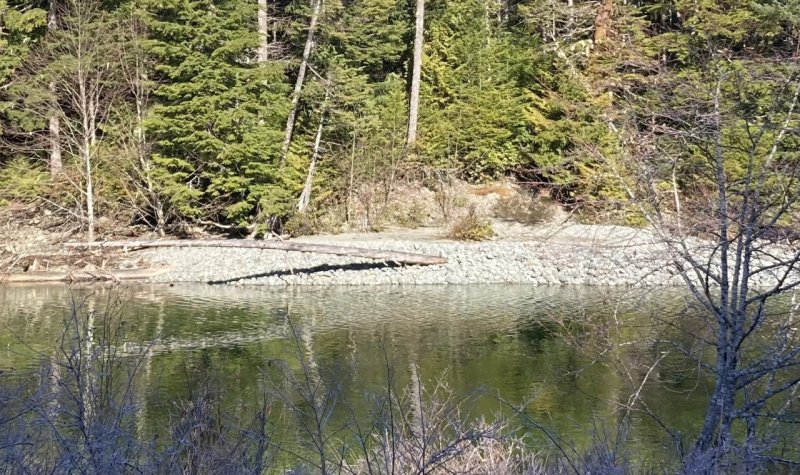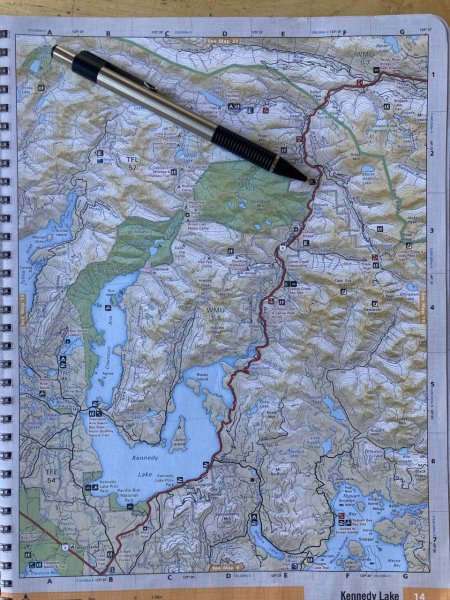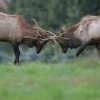Leaderboard
Popular Content
Showing content with the highest reputation on 04/04/2023 in all areas
-
To begin with, DNA has no amino acids, which are found in proteins. Nucleotide bases hold the DNA strands together through hydrogen bonding. Until I see the sequence and the primers used I do not believe Mayor's claim of chimpanzee DNA. Based on behavior and physical characteristics it's as unlikely that Sasquatch DNA is that close to a chimpanzee as it is to be very close to human. UNLESS hybridization is involved. Presumably we are talking about mitochondrial DNA, which is inherited from the mother only. So a hybridization event will not show anything about evolution of the male, or the female. It's a slice in time(of the mating) of the female. Nuclear eDNA is much more difficult (and expensive) to sequence, and was not likely the case in either the Mayor or the Disotell case. But, please, show me the data. If Mayor used a sequencer that had previously been used on chimpanzee DNA, there could be carry over. Protocol details, especially blanks and standards, would be helpful to know here. Comparisons of the Kentucky vs the Washington environment based only on rainfall neglect other important factors such as microbe species and populations, temperatures, and sample handling. There is plenty of opportunity for degradation. I am currently analyzing littoral eDNA sequences for signs of an unknown primate and have learned that sequencing errors can confuse the issue, as well as heteroplasmy, and the possibility of sperm mtDNA leaking (into the egg). The latter is fairly minute in humans but may not be so in Sasquatch. The community awaits a sample collected from an observed Sasquatch immediately after deposition, or a body part. Otherwise, as mentioned above, there are too many unknowns to base a case on subtle differences. In the mtDNA region of over 200 bases that I studied, Neanderthal differs from modern human by only ONE mutation, so there's "no room" to distinguish an intermediate Sasquatch there. Longer sequences in other regions are desirable. There's a lot of data to sort through in this work. The so called "mammalian" primers I used also sequenced birds, and fish, lots of them. Unfortunately I know of no readily available software to do this. Also, the NCBI BLAST results are not eDNA friendly, so relevant data must be extracted through character manipulation of large flat files. I wrote BASIC programs and also used Excel sorting. A goal of this work is to develop a simple procedure that can be used by our Community to analyze sequence data from commercial labs.3 points
-
How about a little science here. Most of us, if not all of us, know about these discoveries found in Washington state and most of the story behind both finds. The find in May of 2015 or so, and the other in the same area in February of 2020. DNA samples were extracted from under the centers of some of the structures in the first discovery and sent off to be tested. And that's where my question lies. And it is: How is it that a novel primate wasn't discovered in the sample results? I've thought about this a lot during my self-imposed DNA technology education. My conclusion is that I don't understand one bit how a novel primate, if that's what constructed these nests, got missed. Because there were MORE than just one soil sample collected at the site. Maybe a little background would help clarify my confusion after critically thinking about those test outcomes over these past couple of years. Important flashback: Dr. Mireya Mayor, 2020: a large wooden stick/tree structure was found in a forested are of eastern Kentucky. A soil sample was taken, THREE actually, and tested at either UCLA or UC Santa Cruz. Nothing as far as I know was SPECIFICALLY targeted in the way of a particular species, so the testing was done as high throughput, next generation sequencing. In other words, metabarcoding lab protocol which will put out data from the samples on every organism it detects that has a genome in GenBank. Those samples were reported to have Chimp DNA in them, though more samples were needed to support that out come. Have more been taken from the site since then? Don't know. All I know is that good samples, which apparently they were, would be able to show differences in genus- which they did as per the UC lab's disclaimer on what it could detect. Break time.....1 point
-
Found myself in Ucluelet for work this past weekend. Even though I spent most of my life on Vancouver Island, I've never travelled to the Tofino/Ucluelet area. I kept an eye open for the sighting location from 2007, as depicted in MonsterQuest's "Mysterious Ape Island". It is on Highway 4, as it runs along the Kennedy River between Port Alberni and Ucluelet. Turns out is was very easy to spot, and looks remarkably similar for a riverbank location, 16 years later. In the episode they refer to a Maureen Creek bridge, which in fact appears to actually be Marion Creek, at least according to Backroads Map Book.1 point
-
By "13 years ago" I assume you refer to the Ketchum debacle, which proved nothing. Actually, that was 10 years ago. How time flies....1 point
-
Okay, eastern Kentucky. Why there? Maybe to meet up with Adrian Erickson? Maybe not? The point here is that according to some studies over the years by people working on the Sasquatch issue have postulated that the creature seems to prefer a climate that sees 30-40 inches, or more, of annual rainfall. Eastern Kentucky has an annual rainfall of 38 inches. Southeaster Kentucky can average as much as 58 inches. That's about as much as the Ouachita National Forest which has an average annual rainfall of a little over 50". Mason County in Washington state hovers between 40-50 inches a year. These are important facts to know for this thread because it goes to what one might expect with regards to the quality of DNA collected, even though time and other influences can be a factor affecting that quality. No brainer there, right? But here's where it gets interesting. Mason county, the Ouachita NF, and eastern Kentucky average out about the same on annual rainfall. Dr. Mayor got Chimp DNA (genus Pan troglodyte) from the soil under a wood structure. No one knows how long that structure was there or when a "Chimp or Chimps" visited the site. But regardless the DNA in the soil was good enough quality to show genus. But what about the nest structures in Mason County, Washington? Soil samples were taken there as well and apparently, according to Derek Randles and others, there was still greenery (leaves) on some of the material used to build the structures. So. Fresh structures only a few months old. Dr. Jeffrey Meldrum was called in and he took soil samples from under the centers of the nests. The same protocols ere followed in the lab by Dr. Todd Disotell. And I know that to be true because, like eastern Kentucky, the sequencing process picked up on everything at the nest site that on would expect. In other words, ALL of the organisms that were expected and that had their genomes in the GenBank. So bottom line here is that both Mason County and eastern Kentucky receive approximately the same amount of rainfall, both had some kind of manufactured structure or structures, both had professional PhD's take soil samples, and both ran those samples using a lab protocol utilizing next generation, high throughout, metabarcode sequencing. Both got multiple organisms returned in the results and yet.... Break time.....1 point
-
1 point
-
^^ "For the greater good," LOL. Liked your post and got the irony The thing is Gigantopithicus, Paranthropus, Neanderthal, Home Erectus, and other paleos were all proposed over 50years ago but we still see those ancient beings being brought up, even back when Meldrum was proposing them, as if they were new thoughts and ideas. All of them were brought up as possibilities in a book back in 1975. So much for progress. there IS no progress and has't been for a long, long, time. I feel sorry for new members who get handed this kind of stuff as if it were some kind of cutting edge thinking. It isn't. In truth it's very old thinking being rehashed. Footprint casts, hair sample analysis, recordings, photos, videos....ALL are ancient history paraded out to new generations who don't KNOW that it's old stuff. Make people look like deep thinking expert researchers. They are not. Same things said and done over and over. Go ahead anyone, bring a photo, bring a "new" photo of a footprint, bring in a "new" photo of a footprint cast, bring in a "new" audio. It's all been done hundreds of times over. New members come in and the whole thing gets to start all over again. Fine. But where does that leave today? Hmmm, oh, about 50 years back. Differences? sure. A dozen museums, 20 annual conferences, a thousand books, hundreds and hundreds of vendors.....and yet, nothing proving the creature even exists. The only thing to show for it all is money, money, money, and more money to be made. Bot how much money is thrown at getting proof? Certainly not much if any compared to the billions taken in by the BF industry. Guess everyone's okay with that? I'm not, never have been. Given the chance I'd singlehandedly shut it all down. So that all the money will be available for funding discovery. Truth. Beyond that, I'll humor you: :Anyone have any recent photos of a Bigfoot they took ?1 point
-
I agree with you to a point. But If you run horses and mules in with cattle and have lots of pasture and buy hay in bulk it’s not nearly as costly as keeping them on four acres. The price of a round bale straight from the field is a lot cheaper than a 80 lbs bale bought at the feed store. The one mule I bought from an old mountain man down the road had never been fed hay in his life. The old guy had a couple hundred acres of south facing pasture that they got kicked into every winter and they dug for their grub. And they dipped snow. No hay. No water tank. I think that’s harsh but that was the toughest mule I ever owned. Ultimately it comes down to what you wanna do. If wilderness is the goal then mules are king, beats walking by a fair margin. If you’re just gonna hang out in national forest where ATV’s are allowed? Then it might not make sense. I still would prefer hunting off a mule than a ATV. But with my neck injury the risk isn’t worth it anymore. I am now a yuppie with an e bike.1 point
-
I am pretty tired of the same documentaries over and over again. The loose recipe: 1. some random person who had an experience or two and has some "knowledge" about the subject matter, usually wearing a sasquatch tshirt and saying they had no interest in the subject before their encounter 2. B roll forest footage with mysterious ambient music 3. map shots 4. no out in the field research, and if so, 1 night camping in a hotspot with some unexplainable noises happening most of the time with no evidence other than another guy in a bigfoot shirt telling a story So, of course I will be watching and I will love it. I am sick.1 point
This leaderboard is set to New York/GMT-05:00






.thumb.png.ad17ef0fb2e394641c86af8ad2873773.png)
.thumb.png.3fa8fb9e98bc0e4a22e4ea5da54111ea.png)


